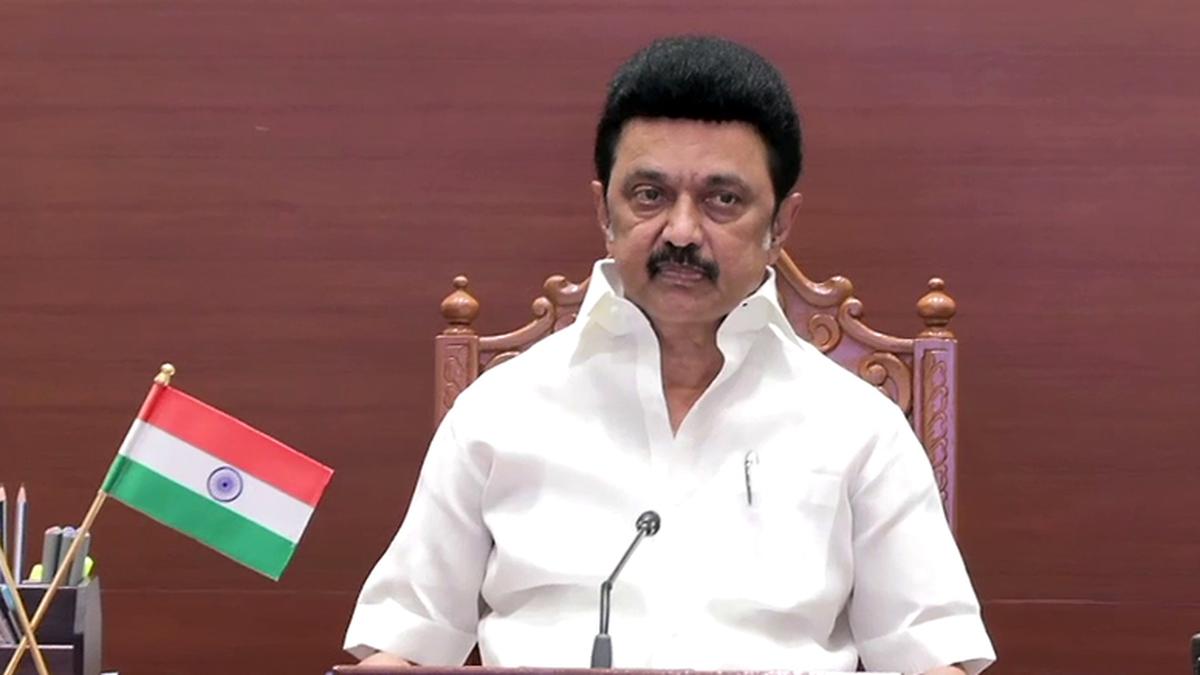
Cyclone Michaung | T.N. CM Stalin seeks ₹7,033 crore as interim relief and ₹12,659 crore as permanent relief from Centre
The Hindu
Tamil Nadu CM M.K. Stalin seeks ₹19,692 crore relief from Centre for Cyclone Michaung damage.
Tamil Nadu Chief Minister M.K. Stalin on Thursday, December 14, 2023 submitted a memorandum to the Central team that visited Chennai and nearby districts to assess the impact of Cyclone Michaung, seeking ₹7,033 crore as interim relief and ₹12,659 crore as permanent relief from the Union government.
Soon after the cyclone, the State government had sought ₹5,060 as interim relief from the Centre and submitted a memorandum in this regard to the Union Defence Minister Rajnath Singh who visited the State last Thursday to inspect the cyclone-affected areas. Mr. Stalin had said that the government would make a revised demand once its detailed assessment of the impact is completed.
According to a release by the government, the relief funds sought by the State government is to repair the roads, bridges, school buildings, government hospitals, electric transformers, electric poles, substations, overhead tanks and other public infrastructure. The funds will also be needed for compensating the losses to fishing community for the damages to their boats and fishing nets, the micro, small and medium scale enterprises, street vendors, and the public who lost their livelihoods.
Mr. Stalin, who met the Central team before they left for Delhi on Thursday, highlighted to them that the State government’s financial resources will not be adequate to repair all the damages to infrastructure and help the people who lost their livelihoods in rebuilding their lives. He requested the team to make appropriate recommendations to the Union government and get the relief amount sought by the Tamil Nadu government.
Highlighting that the rains brought by Cyclone Michaung were unprecedented, he said the State government had undertaken all necessary precautions and swung into action efficiently in the relief efforts. He thanked the Central team for registering their appreciation of the State government during their interaction with the media.

Hampi, the UNESCO-recognised historical site, was the capital of the Vijayanagara empire from 1336 to 1565. Foreign travellers from Persia, Europe and other parts of the world have chronicled the wealth of the place and the unique cultural mores of this kingdom built on the banks of the Tungabhadra river. There are fine descriptions to be found of its temples, farms, markets and trading links, remnants of which one can see in the ruins now. The Literature, architecture of this era continue inspire awe.

Unfurling the zine handed to us at the start of the walk, we use brightly-coloured markers to draw squiggly cables across the page, starting from a sepia-toned vintage photograph of the telegraph office. Iz, who goes by the pronouns they/them, explains, “This building is still standing, though it shut down in 2013,” they say, pointing out that telegraphy, which started in Bengaluru in 1854, was an instrument of colonial power and control. “The British colonised lands via telegraph cables, something known as the All Red Line.”

The festival in Bengaluru is happening at various locations, including ATREE in Jakkur, Bangalore Creative Circus in Yeshwantpur, Courtyard Koota in Kengeri, and Medai the Stage in Koramangala. The festival will also take place in various cities across Karnataka including Tumakuru, Ramanagara, Mandya, Kolar, Chikkaballapura, Hassan, Chitradurga, Davangere, Chamarajanagar and Mysuru.








